Why Puppet?
The Basics
About Me

DevOps@RajeshKumar.XYZ
Problem
A tale of growth...
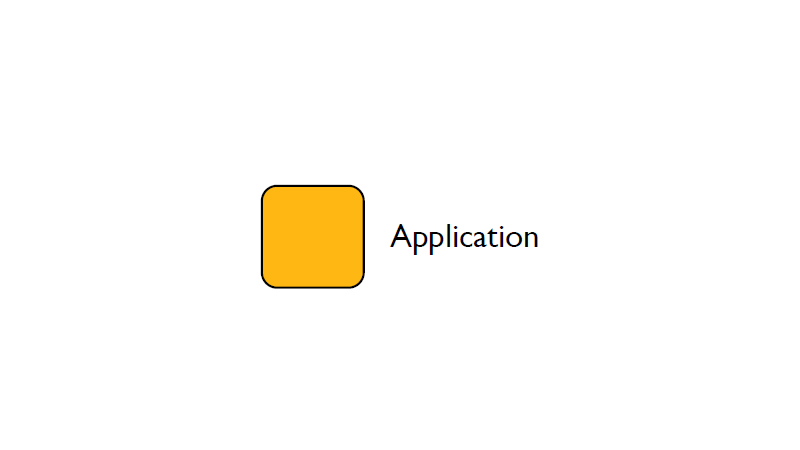
Add a database
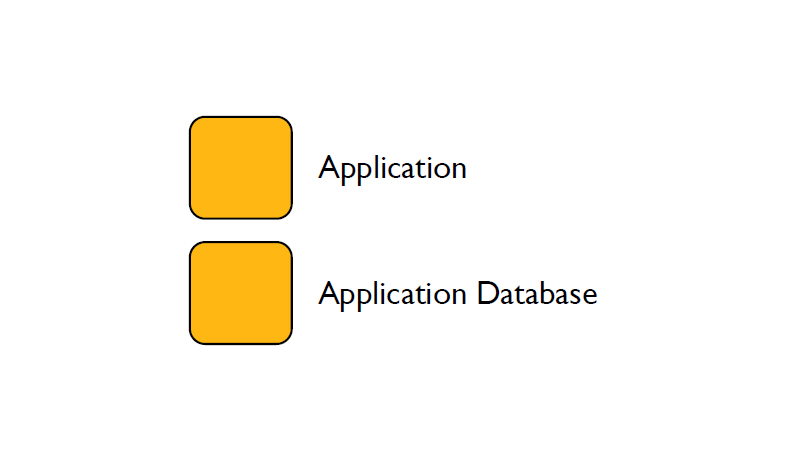
Make database redundant
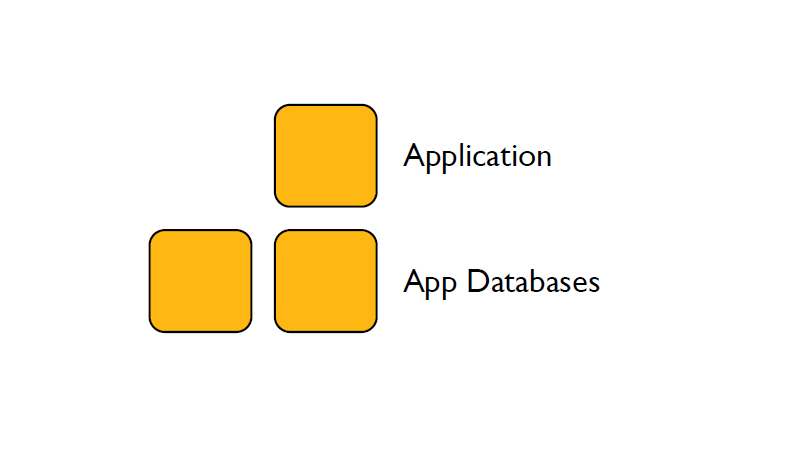
Application server redundancy
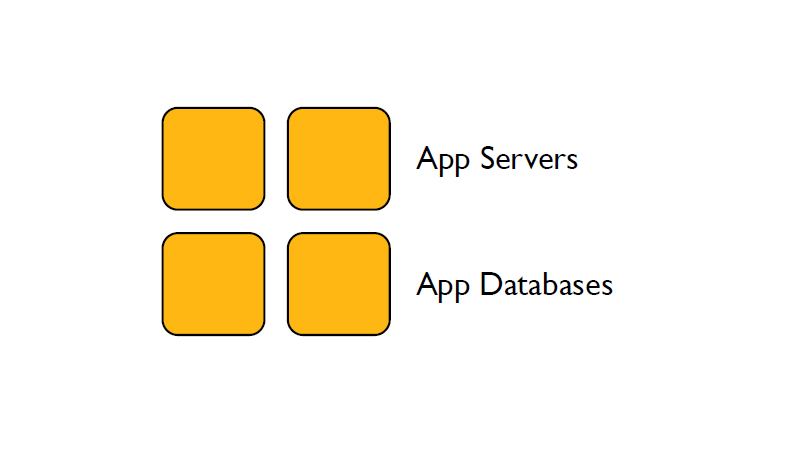
Add a load balancer
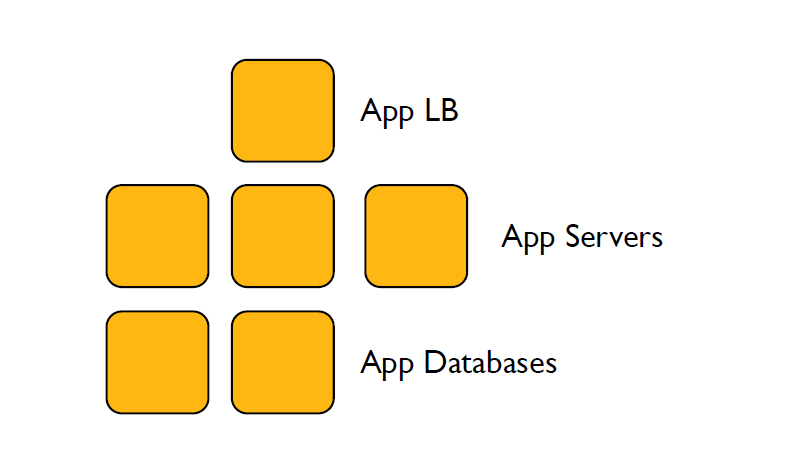
Webscale!
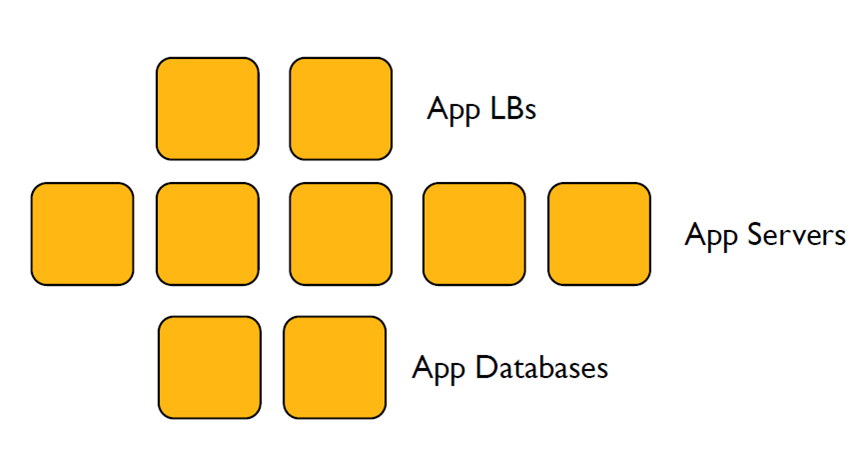
Now we need a caching layer
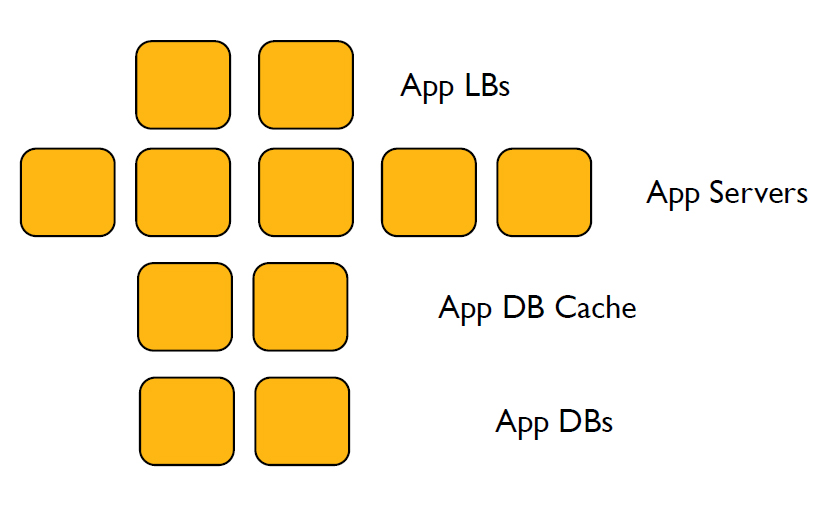
Infrastructure has a Topology
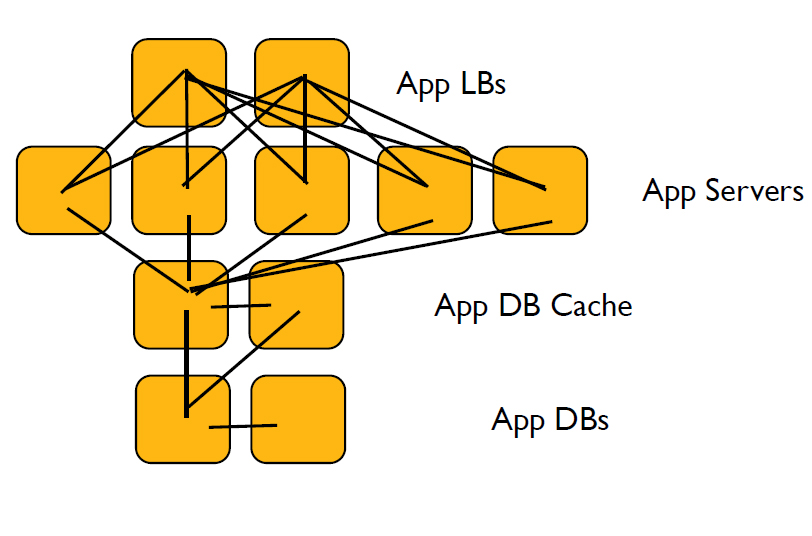
Your Infrastructure is a Snowflake
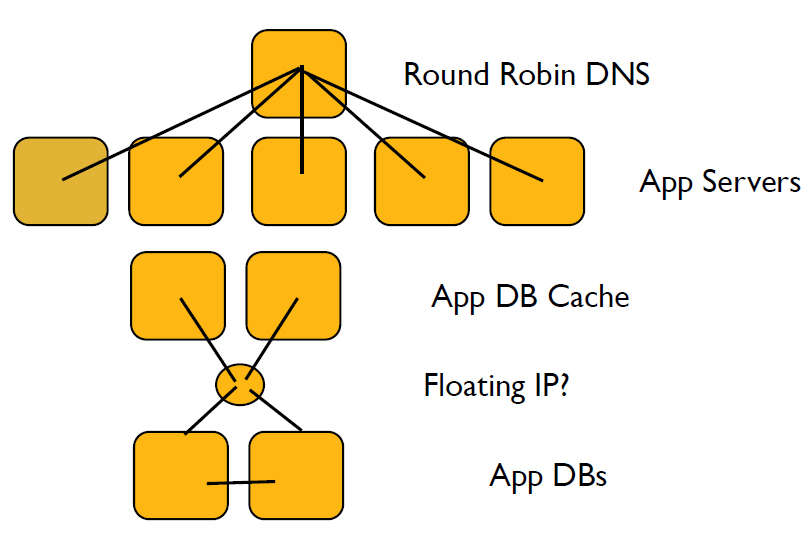
Complexity Increases Quickly
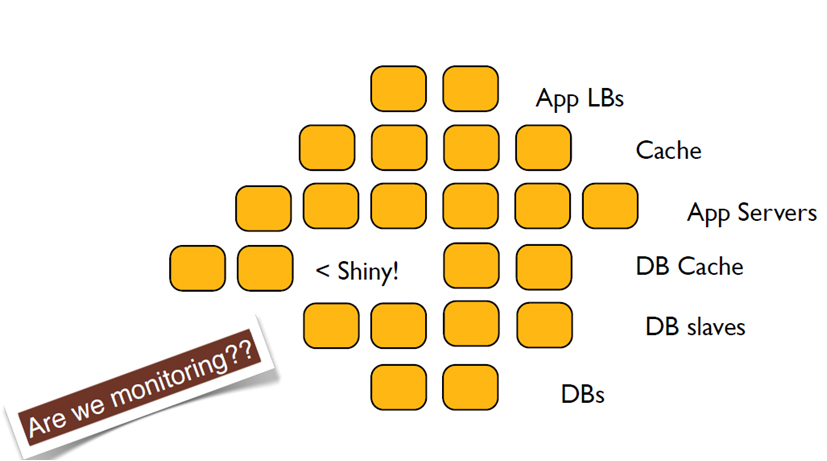
Puppet Solves this problem
4 Major Challenges for SysAdmin
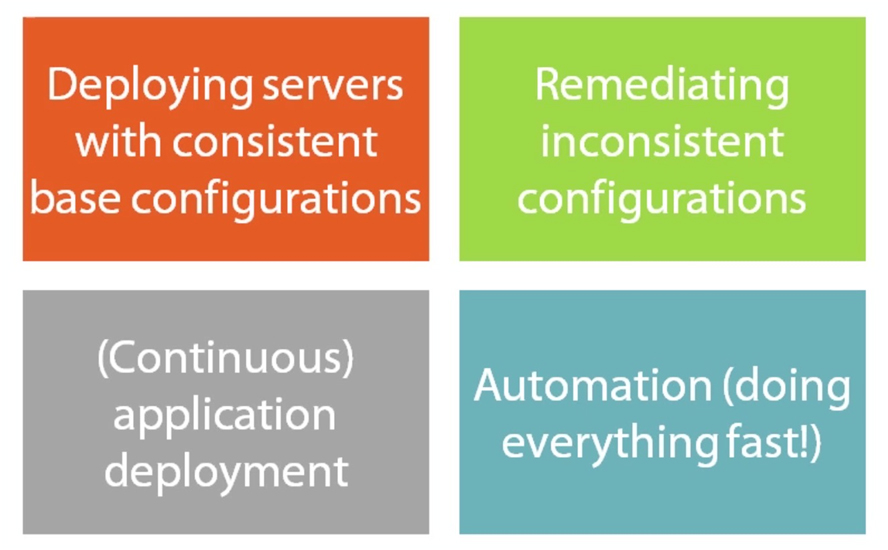
Why not use script?
- Write
- Test
- Debug
Scripts Take Time
Scripts Are Procedural
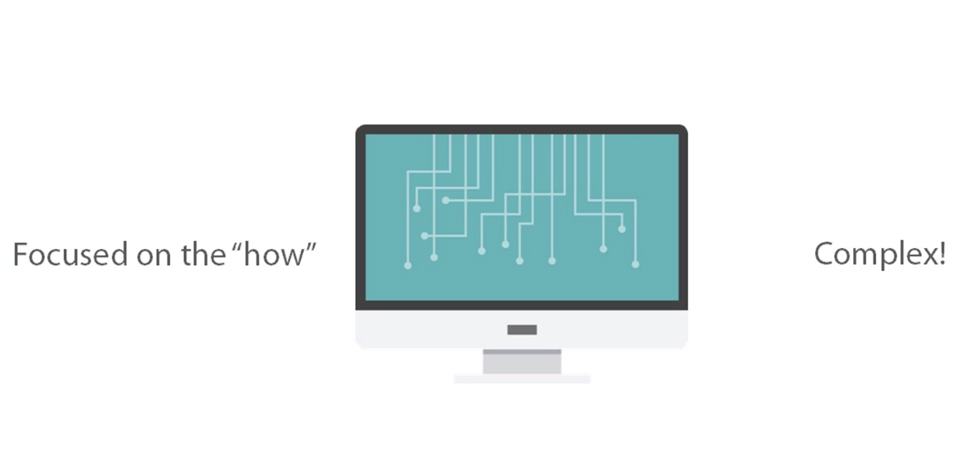
Scripts Are Idiosyncratic
- Multiple ways of doing the same thing
- A script written by one person may be indecipherable to another
Script must be written for each Operating
System version or Distribution
- We will talk about Windows Later, lets check it in Linux
Package Managers and Names Differ Across Distributions
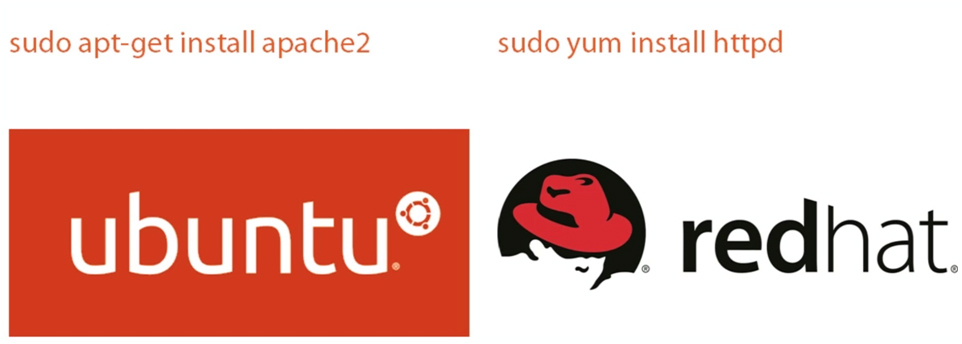
Service Managers Differ Across Versions of the Same Distribution
- Upstart
- restart httpd
CentOS/RHEL 6
CentOS/RHEL7
- systemd
- systemctl restart httpd
What about Windows?
Windows is not Immune
MP owerShell Script written in version 2
may not natively work in versions 3+
What about Group Policies?
Don’t support non Windows operating systems |
Requiresan Active Directory infrastructure |
Extensible... using scripts |
|---|
Solution - Puppet
Puppet overcome the shortcomings of other
configuration management approaches
Puppet Programs are Declarative Vs Procedural
“What”instead of “how” |
Less complex |
Easy to create,understand,and share |
|---|
Puppet Abstracts Resources

- A single Puppet program can work on different operating systems and distributions

One Puppet Master to Rule Them All
Other Tools…
- What about other configuration management systems?
InfoWorld ScoreCard(2013)
-for-puppet.jpg)
CFEngine and Chef
- Complex
- Behaves differently across operating systems
CFEngine
Chef
- Requiresknowledgeof Ruby
Puppet is used by

End of this session
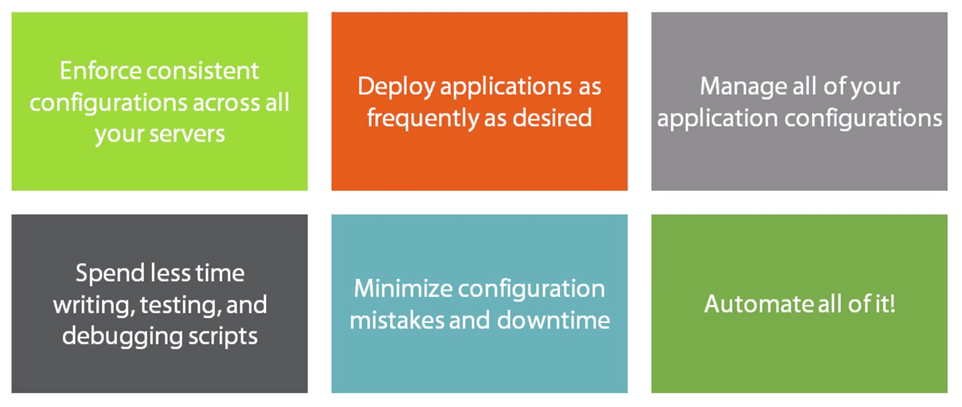
What is Puppet?
Puppet manages your infrastructure. You describe configurations in an easy-to-read declarative language, and Puppet will bring your systems into the desired state and keep them there.
You have a problem.
But there is a solution.
End of this session
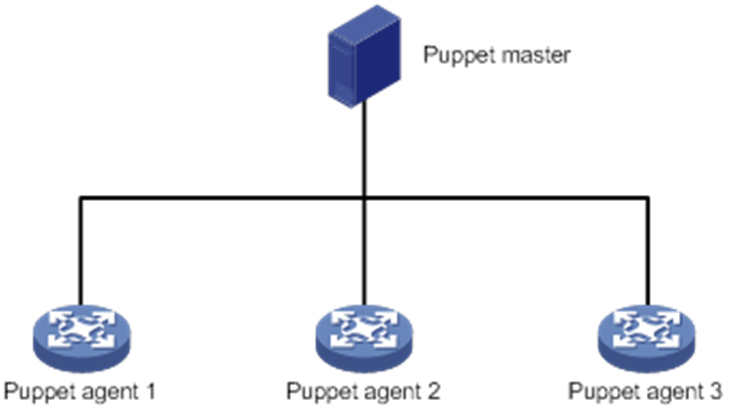


So what's really gonig on?
So what's really gonig on?
DESIRED STATE

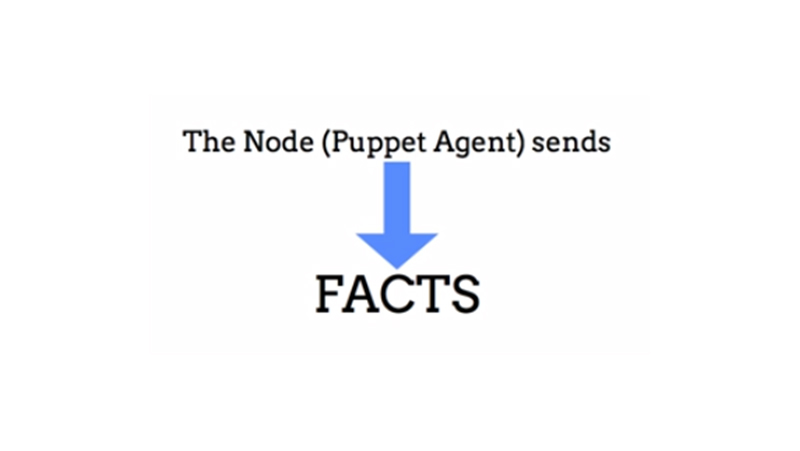
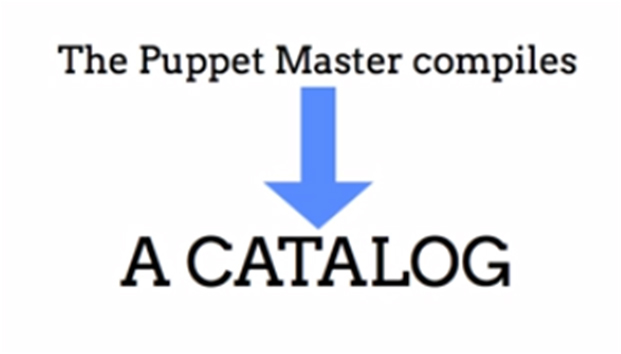


What is Puppet Enterprise?
At the end of this course you will be able to:
- Explain what Puppet Enterprise is.
- List the benefits of using Puppet Enterprise.
- Puppet Enterprise is IT automation software that gives system administrators the power to easily automate repetitive tasks, quickly deploy critical applications, and proactively manage infrastructure, on-premises or in the cloud.
- Puppet Enterprise automates tasks at any stage of the IT infrastructure lifecycle, including: discovery, provisioning, OS & app configuration management, orchestration, and reporting.
Puppet Concept
Prerequisite Knowledge
Basic Linux Administration from the shell
- Text editing
- SSH
Puppet Architecture
Server is called the Puppet Master |
Client are called nodes |
|---|
Puppet Master

Nodes
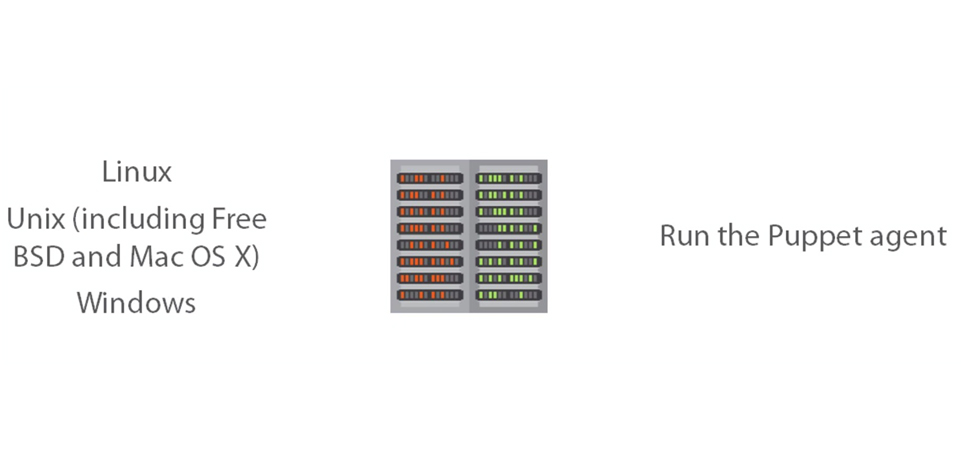
Master and Nodes
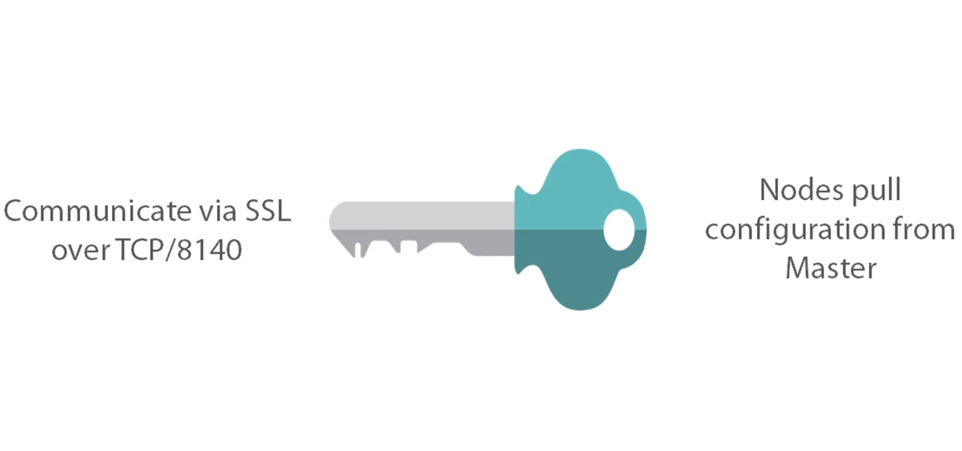
Individual configuration items are called resource declarations
Resource Declaration Answer following….

Resource Declaration
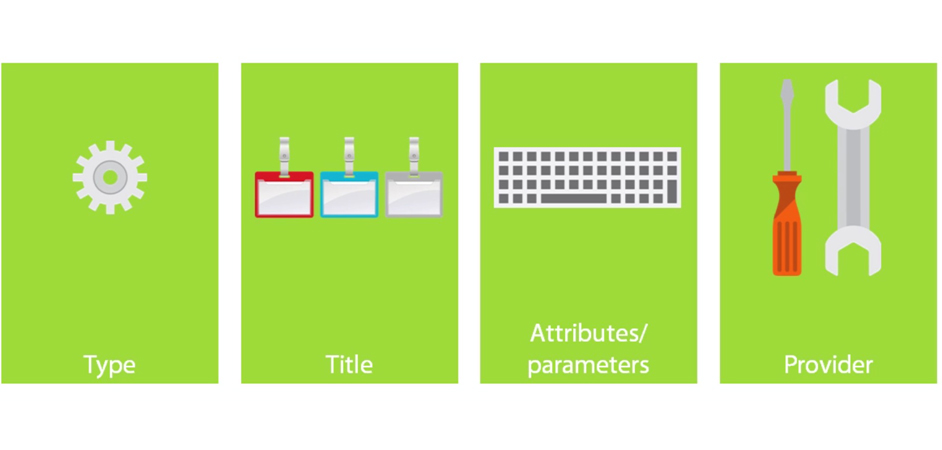
Types
Package |
File |
Service |
|---|
Type - Title
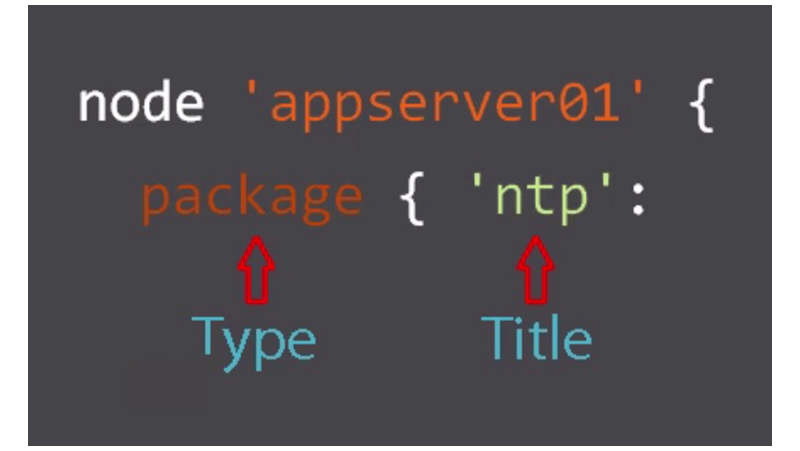
Type – Title - Attributes
node 'apserver'{
Package {'ntp':
ensure => installed,
}
...
Package Resource Type
Ensures the ntp package is installed on appserverOl
Resource Title
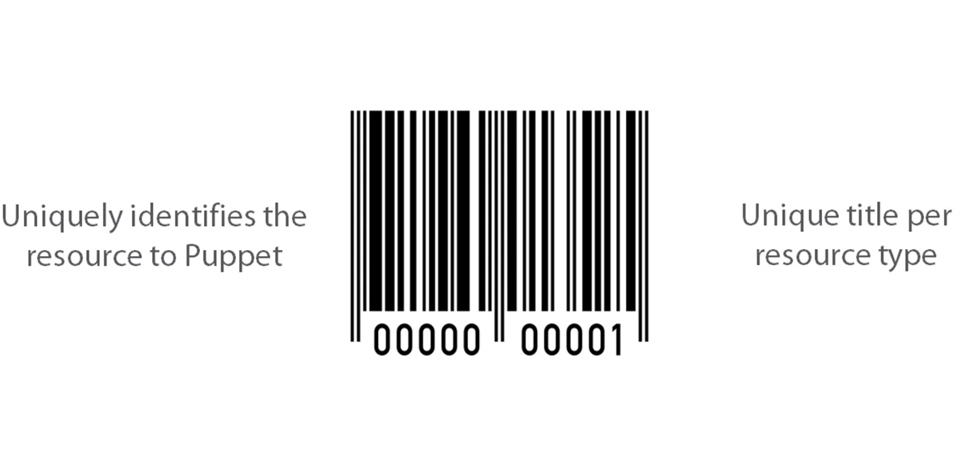
File resource type
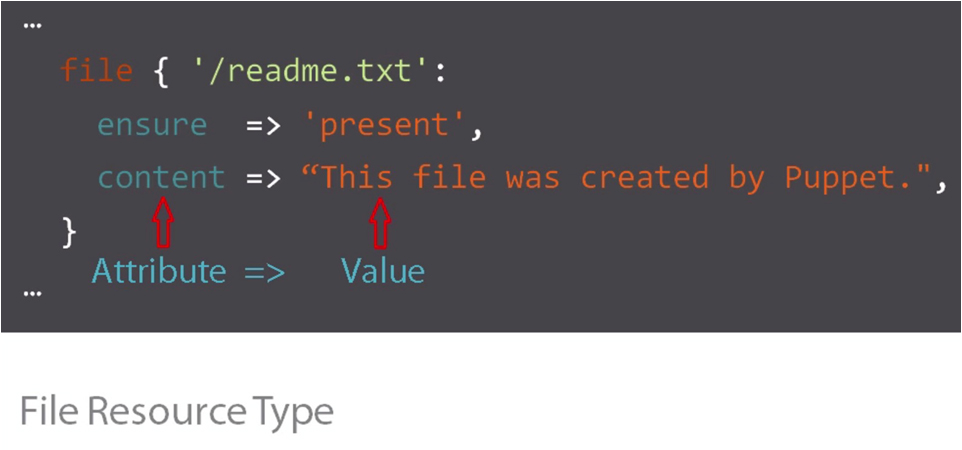
Service resource type
...
service { 'ntpd':
ensure => 'running',
enable => true,
}
}
Service Resource Type
Ensures the ntpd service is enabled and running
Resource Attributes
Answers the question,”What state do we want this resource in?” |
=> | Attribute/value pairs are separated by a “fat comma” |
|---|
Resource Providers
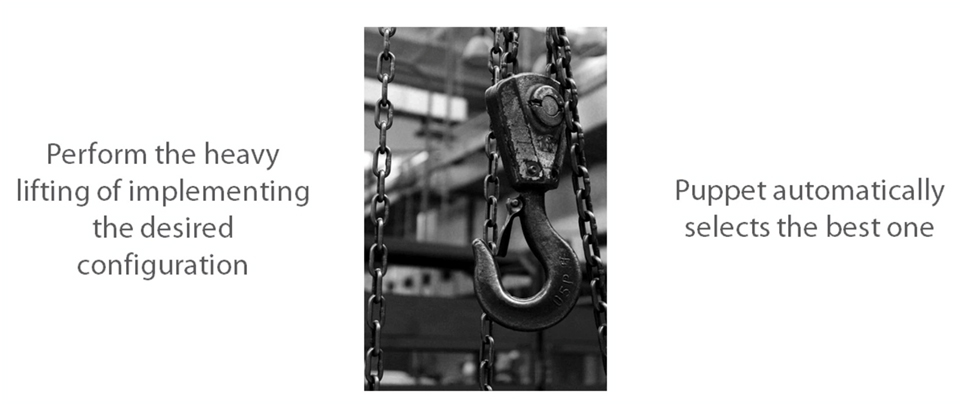
Providers for the Package resource Type
yum (RedHat) |
apt(Ubuntu) |
Windows(Windows) |
|---|
Configuration Run
Node
- Connects to Puppet Master
- Sends facts about itself
- Operating system
- CPU architecture
- Block devices
- Network information
Configuration Run
Puppet Master
- Classifies the node
- Compiles a catalog
- Desired state of each resource
- Dependencies
- Sendscatalogto node
Configuration Run
Node
- Applies the catalog
- Reports results to Master
Creating Manifest
Elements of a Puppet Manifest
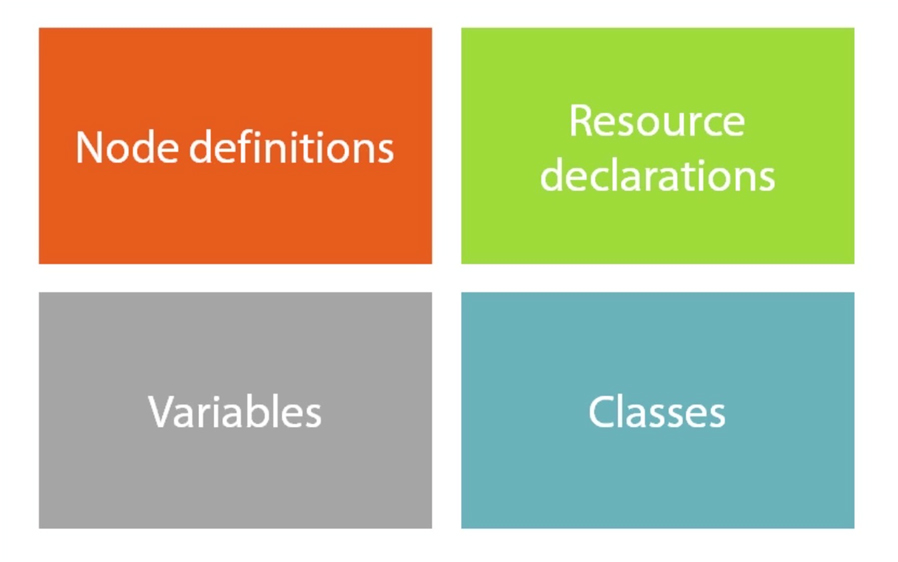
The node.pp Manifest
Stored in /etc/pu ppet/environ ments/prod uction/manifests
Puppet automatically loads all .pp files in the manifests directory
Creating a nodes.pp Manifest
$ sudo nano
/etc/puppet/environments/production/manifests/nodes . pp
node 'wiki'{
}
node 'wikitest'{
}
What Is the Goal?
Create a simple text file on each
Puppet node that says/’Created by
Puppet”followed bya timestamp
Resource Type – File
Managing Files
Goal
Create a simple text file on each
Puppet node that says/’Created by
Puppet”followed bya timestamp
Node.pp
file{'/info.txt':
ensure => 'present',
content => inline_template(created by puppet at <%= Time.now %>\n"),
}
Node.pp
node 'wiki'{
file { '/info.txt':
ensure => 'present',
content => inline_template(created by puppet at <%= Time.now %>\n"),
}|
}
node 'wikitest'{
}
Run from Agent
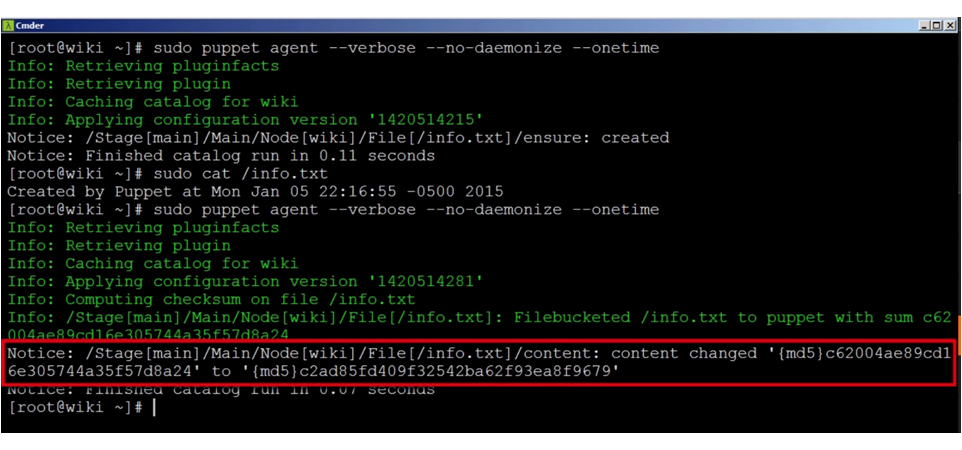
What about the puppet override the file and for
some reason we need to recover the version>
The Client Filebucket
- Stored on the node in
/var/lib/puppet/clientbucket by default
Run from Agent
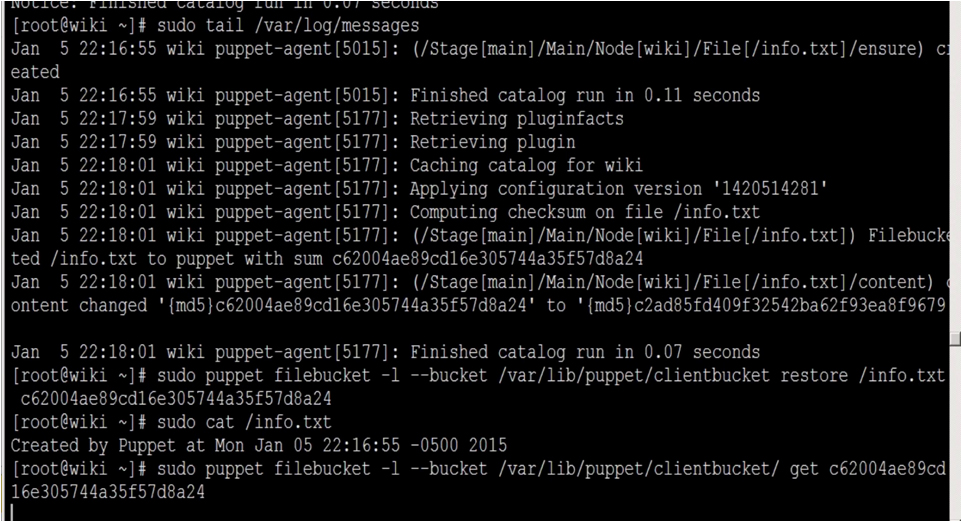
Managing Packages
package{ 'ntp':
ensure => 'installed',
}
node 'wiki'{
file { '/info.txt':
ensure => 'present',
content => inline_template(created by puppet at <%= Time.now %>\n"),
}
package{ 'ntp':
ensure => 'installed',
}
}
node 'wikitest'{
package{ 'ntp':
ensure => 'installed',
}
}
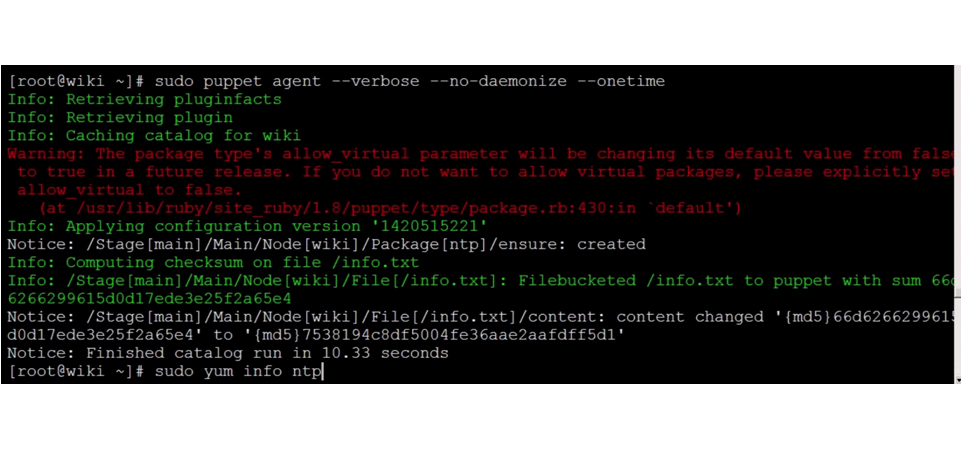
Managing Services
service { 'ntpd':
ensure => 'running',
enable => true,
}
service { 'ntp':
ensure => 'running',
enable => true,
}
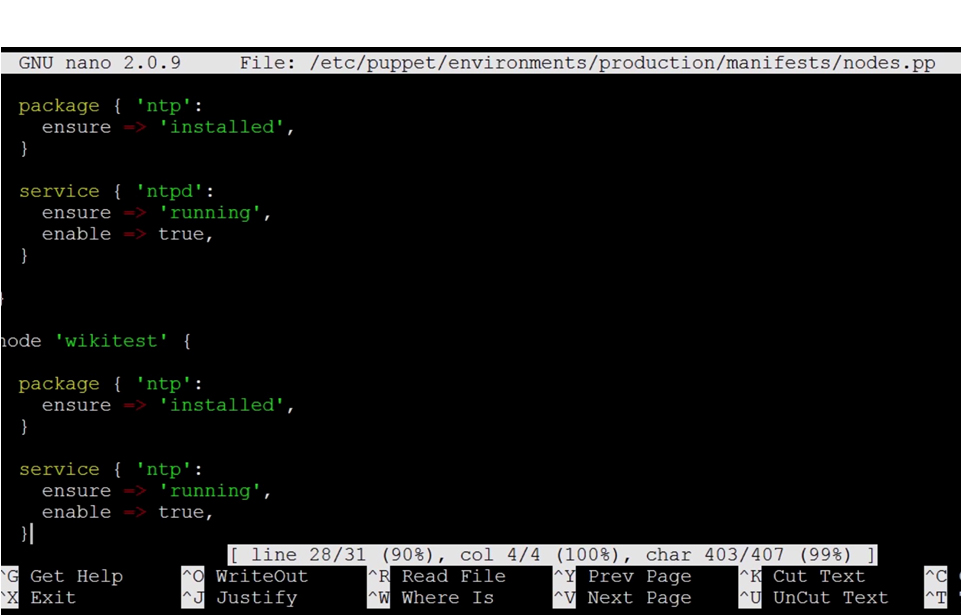
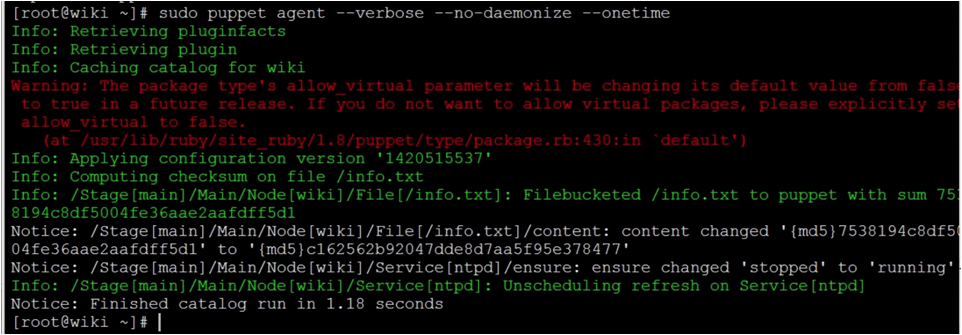
Selectors
$ntpservice = $osfamily ? {
'redhat' => 'ntpd',
'debian' => 'ntp',
default => 'ntp',
}
- A selector assigns one of a set of possible values to a variable based on a condition
Constructing a Selector
Replace:
service { 'ntpd':
ensure => 'running',
enable => true,
}
With:
service { $ntpservice:
ensure => 'running',
enable => true,
}
Classes
DRY = Don’t Repeat Yourself!
Puppet class # object-oriented class
Puppet ciass
A named collection of resource declarations,
variables, selectors, or any other Puppet code
Class Definition and Usage
class linux {
package {'ntp':
ensure => 'installed',
}
}
node 'wiki' {
{ class 'linux': }
}
Variables
class linux {
$admintoo1s = ['git' 'nano', 'screen']
package { $admintoo1s:
ensure => 'installed',
}
}
Questions?

